Description
The instruction for medical use of UVIROMED medicine the Trade name Uviromed Mezhdunarodnoye the unlicensed name Valatsiklovir Lekarstvennaya the Tablet form, film coated, 500 mg and 1000 mg Structure One tablet of drug contains active agent – a valatsiklovir (in the form of a valatsiklovir of a hydrochloride) 500 mg or 1000 mg, excipients: cellulose microcrystalline type 101, K30 povidone, silicon dioxide colloidal anhydrous, magnesium stearate structure of a cover: opadr of II 85F18422 white (the polyvinyl alcohol which is partially hydrolyzed the titan E171 dioxide, a polyethyleneglycol/macrogoal, talc). The description Oblong biconvex tablets, film coated white color, with an engraving of U500 on one party (for a dosage of 500 mg) Oblong biconvex tablets, film coated white color, with an engraving of U1000 on one party and dividing risky on the other hand (for a dosage of 1000 mg) Pharmacotherapeutic group Antiviral drugs for system use. Antiviral drugs of direct action. Nucleosides and nucleotides. Valatsiklovir. ATX J05AB11 code Pharmacological Pharmacokinetics Absorption properties. After intake valatsiklovir it is well absorbed from the digestive tract (DT), quickly and almost completely turns into acyclovir and L-valine. This transformation is catalyzed by enzyme valatsiklovirgidrolazy, allocated from a liver of the person. After single dose of 0.25-2 g of a valatsiklovir the maximum concentration in blood plasma (Cmax) of acyclovir at healthy volunteers with normal function of kidneys averages 10-37 µmol/l (2.2-8.3 mkg/ml), and a median of time of achievement of this concentration – 1-2 hours. At reception of a valatsiklovir in a dose from 1 g the bioavailability of acyclovir is 54% and does not depend on meal. Cmax of a valatsiklovir in plasma makes only 4% of concentration of acyclovir and is reached on average in 30-100 minutes after administration of drug, in 3 hours the Cmax level remains the same or decreases. Distribution Extent of linking of acyclovir with proteins of plasma very low – about 15%. Acyclovir is quickly distributed on body tissues, especially in a liver, kidneys, muscles, lungs. It also gets into secretion of a vagina, cerebrospinal liquid and liquid of herpetic bubbles. Removal At patients with normal function of kidneys elimination half-life (T1/2) of acyclovir after a single dose and repeated use makes about 3 hours. Valatsiklovir is brought with urine, mainly in the form of acyclovir (more than 80% of a dose) and its metabolite a 9-karboksimetoksimetilguanin, in not changed look less than 1% of drug are removed. The pharmacokinetics in special clinical cases At patients with an end-stage of a renal failure of T1/2 of acyclovir makes about 14 hours. The acyclovir pharmacokinetics substantially is not broken at the patients infected with the Herpes simplex and Varicella zoster viruses and also at elderly patients and patients with cirrhosis. At patients with heavy renal failures of Cmax of acyclovir is approximately twice more in comparison with healthy patients, and T1/2 of acyclovir increases by 5 times. Acyclovir, the main metabolite of a valatsiklovir, is excreted with breast milk. After purpose of a valatsiklovir inside in a dose of 500 mg of Cmax of acyclovir in breast milk by 0.5-2.3 times (on average by 1.4 times) exceeded the corresponding its concentration in mother’s plasma. The area relation under a curve concentration time (AUC) of the acyclovir which is in breast milk to AUC acyclovir in plasma of mother made 1.4-2.6 (on average 2.2). Average value of concentration of acyclovir in breast milk – 2.24 mkg/ml. At appointment of mother of a valatsiklovir in a dose of 500 mg 2 times a day the child will undergo the same influence of acyclovir, as at its reception inside in a dose about 0.61 mg/kg/day. Acyclovir T1/2 from breast milk same, as from blood plasma. Valatsiklovir in not changed look is not defined in mother’s plasma, breast milk or the child’s urine. In the late stages of pregnancy the steady daily indicator of AUC after reception of 1 g of a valatsiklovir was approximately twice more, than that at intake of acyclovir in a dose of 1.2 g a day. At pregnancy the pharmacokinetic characteristics of a valatsiklovir do not change. Reception of a valatsiklovir in a dose of 1 g and 2 g does not break distribution and pharmacokinetic indicators of a valatsiklovir at HIV-positive patients in comparison with healthy faces. At recipients of transplants of the bodies receiving valatsiklovir in a dose of 2 g 4 times a day, Cmax of acyclovir is equal or exceeds that at the healthy volunteers receiving the same dose of drug, and daily indicators of AUC at them are much higher. A pharmacodynamics Uviromed – antiviral drug. In a human body valatsiklovir quickly and completely turns into acyclovir and L-valine under the influence of a valatsiklovirgidrolaza. In vitro acyclovir has the specific inhibiting activity concerning the Herpes simplex viruses of types 1 and 2, Varicella zoster and Epstein-Barre, a cytomegalovirus (CMV) and a virus of herpes of the person of type 6. Acyclovir inhibits synthesis of virus deoxyribonucleic acid (DNA) right after phosphorylation and transformation into an active form of acyclovir triphosphate. The first stage of phosphorylation occurs with the participation of virusospetsifichesky enzymes. For the viruses Herpes simplex, Varicella zoster and Epstein-Barre such enzyme is the virus thymidinekinase which is present at the cells affected with a virus. The partial selectivity of phosphorylation remains at CMV and is mediated through a product of a gene of UL 97 phosphotransferase. Acyclovir activation by specific virus enzyme in huge degree explains its selectivity. Acyclovir phosphorylation process (transformation from mono – in triphosphate) comes to the end with cellular kinases. Acyclovir triphosphate competitively inhibits a virus DNA polymerase and, being a nucleoside analog, is built in virus DNA that leads to an obligate rupture of a chain, the termination of synthesis of DNA and, therefore, to blocking of replication of a virus. With the kept immunity the Herpes simplex and Varicella zoster viruses with hyposensitivity to a valatsiklovir occur in patients extremely seldom (less than 0.1%), but can be sometimes found in patients with heavy disturbances of immunity, for example, with a marrow transplant, at receiving chemotherapy concerning malignant new growths and at infected with the human immunodeficiency virus (HIV). The resistance is caused by deficit of a thymidinekinase of a virus that leads to excessive spread of a virus in the owner’s organism. Sometimes decrease in sensitivity to acyclovir is caused by emergence of virus strains with disturbance of structure of a virus thymidinekinase or DNA polymerase. Virulence of these types of a virus reminds that at its wild strain. The indications of the Infection caused by the Varicella zoster (VZV) virus – the surrounding herpes – the surrounding herpes (shingles) and oftalmogerpes at adult immunocompetent patients – the surrounding herpes at adult patients with an easy or moderate immunodeficiency of the Infection, caused by the herpes simplex virus (HSV) – treatment for the first time of the revealed genital herpes at immunocompetent adults and teenagers and also adults with reduced immunity – treatment of recurrent genital herpes at immunocompetent adults and teenagers and also at adults with reduced immunity are suppression of a recurrence of genital herpes at immunocompetent adults and teenagers and also adults with reduced immunity have a treatment and suppression of the eye infections caused by VPG the Cytomegaloviral (CMV) infection – prevention of a Cytomegaloviral infection (CMV) arising at organ transplantation. A route of administration and doses Treatment of shingles, including oftalmogerpes the Adult on 1000 mg 3 times a day within 7 days. If necessary correction of a dose depending on clearance of creatinine is carried out. Treatment of the infections caused by VPG adults and teenagers from 12 years with the kept immunity On 500 mg have 2 times a day. In case of a recurrence the treatment has to continue 3 or 5 days. In more hard primary cases the treatment should be begun as soon as possible, and its duration has to be increased from 5 to 10 days. If necessary correction of a dose depending on clearance of creatinine is carried out. At VPG recurrence Uviromed’s appointment in a prodromal stage or at once after emergence of the first symptoms of a disease is considered ideal. As an alternative for treatment of labial herpes (lip fever) Uviromed’s appointment in a dose of 2 g twice within one day is effective. The second dose has to be accepted approximately in 12 hours (but not earlier, than in 6 hours) after reception of the first dose. When using such mode of dosing duration of treatment should not exceed one day as it as it was shown, does not give additional clinical benefits. Therapy has to be begun at emergence of the earliest symptoms of lip fever (i.e. an itching, burning, tingling). If necessary correction of a dose depending on clearance of creatinine is carried out. Prevention (suppression) of a recurrence of the infections caused by VPG at adults and teenagers from 12 years with the kept immunity At patients with the kept immunity drug is appointed in a dose of 500 mg once a day. With very frequent recurrence (10 and more in a year) the additional effect can achieve from patients at Uviromed’s appointment in the daily dose of 500 mg divided into 2 receptions (on 250 mg 2 times a day). If necessary correction of a dose depending on clearance of creatinine is carried out. Prevention (suppression) of a recurrence of the infections caused by VPG adults with reduced immunity For patients with an immunodeficiency have a recommended dose: 500 mg 2 times a day. If necessary correction of a dose depending on clearance of creatinine is carried out. Safety and efficiency of use for children is not established. Prevention of CMV of an infection of the Dose for adults and teenagers (from 12 years) Is recommended to appoint Uviromed in a dose 2 g 4 times a day, as soon as possible after transplantation. The dose should be reduced depending on clearance of creatinine. Duration of treatment is 90 days, but at patients with high risk, treatment can be longer. Patients with a renal failure Treatment of shingles and the infections caused by VPG, prevention (suppression) and decrease in infection of the healthy partner, prevention of CMV the Mode of appointment Uviromeda at patients with a renal failure has to be set according to this table: Therapeutic indications Clearance of creatinine, ml/min. the Dose the Surrounding herpes (treatment) at adults with the kept immunity and with an immunodeficiency 50 and more than from 30 to 49 from 10 to 29 less than 10 1 g 3 times in day of 1 g 2 times in day of 1 g of 1 times in day of 500 mg of 1 times a day the Herpes simplex (treatment) at adults and teenagers with the kept immunity 30 and more or less 30,500 mg 2 times in day of 500 mg of 1 times a day Labial herpes (treatment) at adults and teenagers with the kept immunity 50 and more than from 30 to 49 from 10 to 29 less than 10 2 g twice within 1 day 1 g twice within 1 day of 500 mg twice within 1 day of 500 mg once the Herpes simplex prevention (suppression): – adults and teenagers with the kept immunity – adults with reduced immunity 30 both more or less 30 30 and more or less in day of 250 mg of 1 times in day of 500 mg 2 times in day of 500 mg of 1 times a day Prevention of CMV of an infection at adults and teenagers 75 and more from 50 to and lt, 75 from 25 to & lt, 50 from 10 to & lt, 25 & lt, 10 or dialysis * 2 g 4 times in day of 1.5 g 4 times in day of 1.5 g 3 times in day of 1.5 g 2 times in day of 1.5 g of 1 times a day Decrease in infection with genital herpes less than 15,250 mg of 1 times a day to the Patients who are on a hemodialysis Uviromed right after the end of a session of a hemodialysis is recommended to apply 30,500 mg of 1 times. * It is necessary to define often clearance of creatinine, especially during the periods when function of kidneys quickly changes, for example, right after transplantation or during engraftment of a transplant, at the same time Uviromed’s dose is adjusted according to indicators of clearance of creatinine. Patients with a liver failure with poorly and moderate cirrhosis of correction of a dose of drug it is not required From patients. Pharmacokinetic data at patients with heavy cirrhosis also do not confirm need to adjust doses of a valatsiklovir, however, experience of its clinical use in this pathology is limited. Use for elderly people of Correction of a dose is not required, except for a considerable renal failure. It is necessary to maintain adequate water and electrolytic balance. Side effects by the Most widespread side reactions revealed during clinical trials are a headache and nausea. Frequency of occurrence is defined as follows: very often (≥1/10), it is frequent (≥1/100 and & lt, 1/10), infrequently (≥1/1,000 and & lt, 1/100), is rare (≥1/10,000 and & lt, 1/1,000), is very rare (& lt, 1/10,000, including separate cases), it is unknown (frequency cannot be determined on the basis of the available data). Disturbances from nervous system Very often – a headache Often – dizziness Infrequently – confusion of consciousness, a hallucination, reduced mental capacities, a tremor, excitement Is rare – an ataxy, a dysarthtia, spasms, encephalopathy, coma, psychotic symptoms. Disturbances from digestive tract Often – nausea – vomiting – diarrhea Seldom – discomfort in the Disturbance stomach from a hemopoiesis and lymphatic system Infrequently – a leukopenia, thrombocytopenia Emergence of a leukopenia is mainly observed at patients with reduced immunity. Very seldom – thrombocytopenic akroangiotromboz (a Werlhof’s trombogemolitichesky disease), a gemolitiko-uraemic syndrome of Disturbance from the respiratory system, bodies of a thorax and mediastinum Infrequently – the Disturbance asthma from a gepatobliarny system Infrequently – reversible increases in function of a liver (for example, bilirubin, liver enzymes) which sometimes regard as manifestations of hepatitis of Disturbance from skin and hypodermic fabrics Often – rash, including reactions of photosensitivity – naggers Infrequently – a small tortoiseshell Seldom – a Quincke’s disease (Quincke’s edema) of Disturbance from kidneys and urinary tract Infrequently – pain in kidneys Seldom – a renal failure, an acute renal failure (especially at the people of old age and patients with a renal failure receiving the doses exceeding recommended). Kidney pain can be connected with a renal failure. Also there are messages about intratubulyarny precipitation of crystals of acyclovir. During treatment it is necessary to provide adequate consumption of liquid. The listed above symptoms are reversible and are usually observed at patients with disturbance of renal function or against the background of other contributing states. At the patients with a transplanted organ receiving high doses (8 g a day) a valatsiklovira for prevention of CMV of an infection, neurologic reactions develop more often than at reception of lower doses. At patients with heavy disturbances of immunity, especially at the patients with far come stage of AIDS receiving high doses of a valatsiklovir (8 g daily) during the long span, cases of a renal failure, mikroangiopatichesky hemolytic anemia and thrombocytopenia were observed (sometimes in a combination). Similar complications were noted at the patients with the same diseases but who are not receiving valatsiklovir. Contraindications – hypersensitivity to a valatsiklovir, acyclovir and other components of drug – children’s and teenage age up to 18 years (treatment of shingles, including oftalmogerpes, prevention (suppression) of a recurrence of the infections caused by VPG at patients with reduced immunity, prevention of infection with genital herpes) – children’s age up to 12 years (prevention of CMV of an infection) With care: liver failure (high doses of drug), renal failure, pregnancy, lactation period. Medicinal interactions and probenetsid after reception of 1 g of a valatsiklovir raise Cimetidinum AUC acyclovir, reducing eg
renal clearance (however dose adjustment of a valatsiklovir is not required because of the wide therapeutic index of acyclovir). It is necessary to be careful in case of simultaneous use of a valatsiklovir in high doses (4 g a day) and medicines which compete with acyclovir for a way of elimination (the last eliminirutsya with urine in not changed look as a result of active canalicular secretion) as there is a potential threat of increase in plasma of level of one or both drugs or their metabolites. At simultaneous use of acyclovir with mikofenolaty a mofetil increase in AUC of the first and inactive metabolite of the second was noted. It is also necessary to be careful at a combination of a valatsiklovir in high doses (4 g a day and above) with the drugs influencing functions of kidneys (for example, cyclosporine, takrolimus). It is necessary to use with care a combination of a valatsiklovir with nephrotoxic medicines, especially at patients with impaired renal function, and regular monitoring of function of kidneys is required. It belongs to simultaneous use of aminoglycosides, organic compounds of platinum, the iodated contrast agents, methotrexate, pentamidine, foskarnet, cyclosporine and takrolimus. Special instructions At patients with risk of dehydration, especially at patients of advanced age, it is necessary to provide adequate completion of liquid. Acyclovir is removed mainly through kidneys therefore the dose of a valatsiklovir has to be reduced at patients with a renal failure. Patients of advanced age have a probability of depression of function of kidneys, in communication with what it is necessary to consider expediency of correction of the appointed dose in connection with high risk of development of neurologic reactions regarding which these patients have to be observed throughout all therapy. These reactions, as a rule, are reversible and disappear after the treatment termination. Use of higher doses of a valatsiklovir in a liver failure and transplantation of a liver: there are no data on use of a valatsiklovir in higher doses (4 g and any more in day) at patients with a liver disease therefore high doses of a valatsiklovir to them have to be appointed with care. Special researches on studying action of a valatsiklovir at liver transplantation were not conducted. However, it was shown that preventive prescribing of acyclovir in high doses reduces CMV an infection. When using for treatment of the surrounding herpes the careful monitoring of clinical reactions, in particular at patients with reduced immunity has to be carried out. In case reaction to oral administration is regarded as insufficient, then it is necessary to consider a question of use of intravenous anti-virus therapy. Patients with the complicated surrounding herpes, i.e. persons with involvement of visceral bodies, widespread shingles, motive neuropatiya, encephalitis and cerebrovascular complications, have to undergo treatment with use of intravenous therapy. Moreover, patients with the weakened immunity with the ophthalmic surrounding herpes or high risk of spread of a disease with involvement in process of internals, have to receive therapy with use of intravenous therapy. Use in genital herpes of Supressivnaya the therapy valatsikloviry reduces risk of transfer of genital herpes, but does not exclude it completely and does not lead to full treatment. Therapy valatsikloviry is recommended in combination with safe sex. Use for treatment of ophthalmic VPG U of such patients the careful monitoring of clinical reactions has to be carried out. In case reaction to oral administration is insufficient, then it is necessary to consider a question of use of intravenous antiviral therapy. Data on efficiency of a valatsiklovir at patients to whom transplantation (~ 200), the diseases subject to high risk connected with CMV (for example, the donor with positive reaction on the CMV/recipient with negative reaction to CMV was carried out or when using induction therapy by antithymocyte globulin) indicate use for treatment of an infection of CMV that the valatsiklovir for treatment of such patients should be used only in case the potential advantage exceeds potential risk of use of a valgantsiklovir or gantsiklovir. The high dosage of a valatsiklovir necessary for prevention of CMV can cause more frequent side effects, including disturbances from central nervous system, than in case of use of lower doses at other indications. Patients need to undergo careful monitoring of changes of renal function with the corresponding correction of the accepted dose. Use in pediatrics Is not present data on use of a valatsiklovir for children 12 years for prevention of a recurrence of the infections caused by VPG at patients with the kept immunity and prevention of CMV of an infection are younger. Also there are no data on use of a valatsiklovir for children and teenagers 18 years for treatment of shingles, including oftalmogerpes, for prevention of a recurrence of the infections caused by VPG at patients with reduced immunity and prevention of infection with genital herpes are younger. Pregnancy and the period of a lactation of Data on use of a valatsiklovir at pregnancy are not enough. Uviromed it is necessary to apply at pregnancy only if the potential advantage for mother exceeds potential risk for a fruit. Acyclovir, the main metabolite of a valatsiklovir, is excreted by breast milk. After purpose of a valatsiklovir in a dose of 500 mg inside the maximum concentration of acyclovir (Cmax) in breast milk by 0.5-2.3 times (on average by 1.4 times) exceeded the corresponding concentration of acyclovir in mother’s plasma. The relation of AUC of the acyclovir which is in breast milk to AUC acyclovir of plasma of mother fluctuated from 1.4 to 2.6 (average value 2.2). The average value of concentration of acyclovir in breast milk was 2.24 mkg/ml (9.95 mkgm). At reception by mother of a valatsiklovir in a dose of 500 mg 2 times a day the child will undergo the same influence of acyclovir, as at its reception inside in a dose about 0.61 mg/kg/day. Elimination half-life of acyclovir from breast milk same, as from blood plasma. Valatsiklovir in not changed look was not defined in mother’s plasma, breast milk or the child’s urine. Uviromed the feeding women should appoint with care. The feature of influence of medicine on ability to run the vehicle or potentially dangerous mechanisms At use of drug should be careful in case of development of the side reactions influencing the speed of psychomotor reactions. The overdose valatsikloviry is not enough Now data on overdose. Symptoms: at intake within several days of ultrahigh doses of a valatsiklovir the nausea, vomiting, a headache, confusion of consciousness, a hallucination, excitement, spasms, a coma, an acute renal failure developed. Treatment: patients have to be under careful medical observation for identification of signs of toxic action. The hemodialysis considerably strengthens removal of acyclovir from blood and can reckon as a choice method when maintaining patients with overdose of a valatsiklovir. The form of release and packing On 7 or 10 tablets place in blister strip packaging from a film of polyvinylchloride and aluminum foil. On 1 or 3 blister strip packagings together with the instruction for medical use in the state and Russian languages put in a pack from cardboard Storage conditions to Store at a temperature not above 25 °C. To store out of children’s reach! 3 years not to apply a period of storage after an expiration date. Prescription status According to the prescription the Producer/packer UORLD of ILACh DIGNITY MEDICINE. VE TIDZh. A.Sh., TURKEY (Bagdzhylar Ilchesi, Gyuneshli, Evren Makhallesi, Dzhami Yolu Dzhad. No. 50 K. 1B Zemin 4-5-6, Istanbul) ‘WORLD MEDICINE İLAÇ SAN. VE TİC. A.Ş.’, TURKEY (Bağcılar İlçesi, Güneşli, Evren Mahallesi, Cami Yolu Cad. No: 50 K. 1B of Zemin 4-5-6, İstanbul). Owner of the registration certificate UORLD of ILACh DIGNITY MEDICINE. VE TIDZh. A.Sh., TURKEY the Address of the organization accepting in the territory of the Republic of Kazakhstan claims from consumers on quality of products: RIN Pharm LLP, RK, Almaty, Suyunbaya Ave., 222 B Ph. / fax: +7 (727) 2529090 Address of the organization responsible for post-registration observation of safety of medicine: TROKA-S PHARMA LLP, RK, Almaty, Suyunbaya Ave.
to Develop 222 B
Additional information
| Ingredient |
|---|





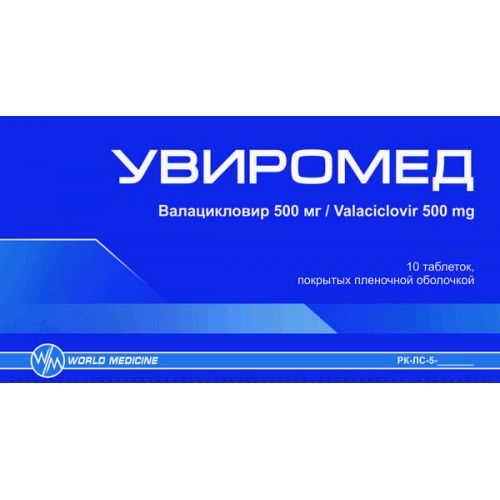
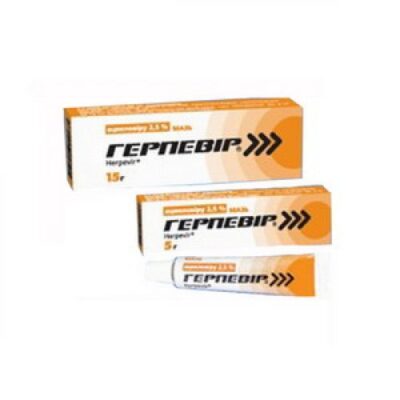
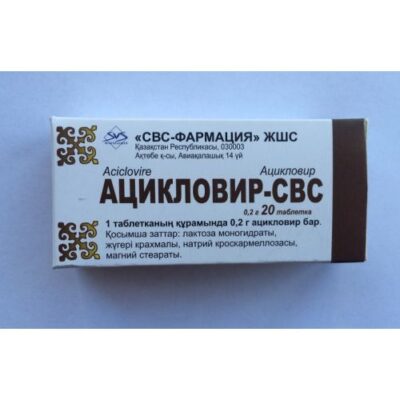
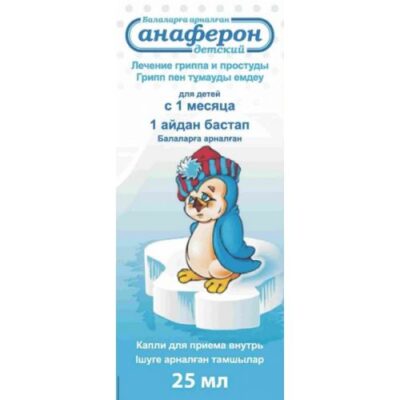
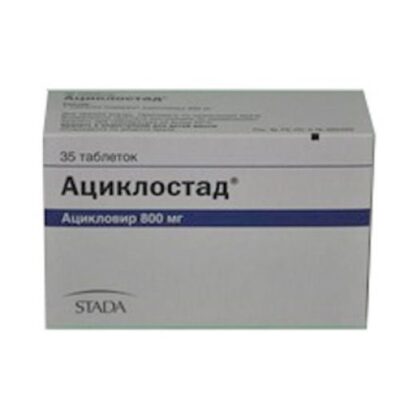
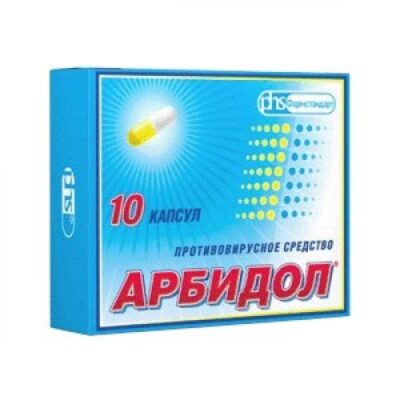
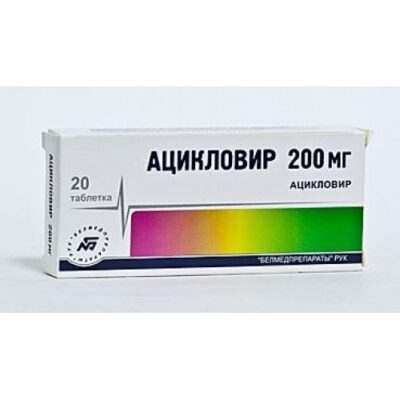
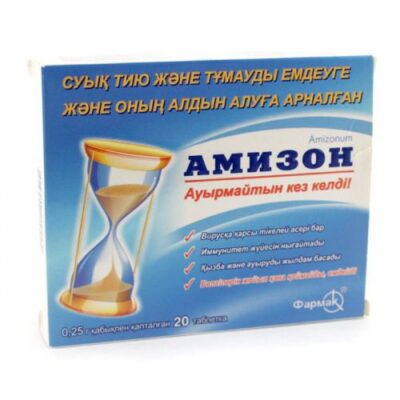
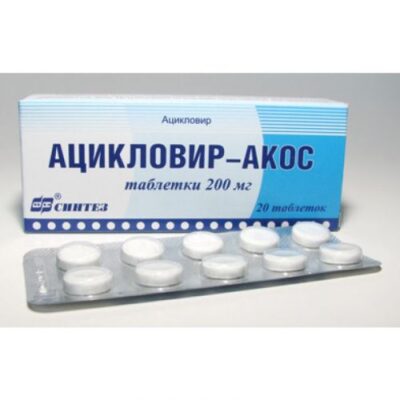
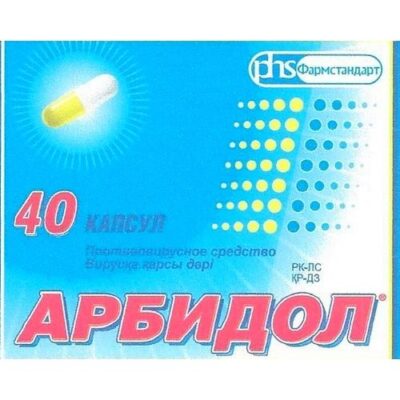
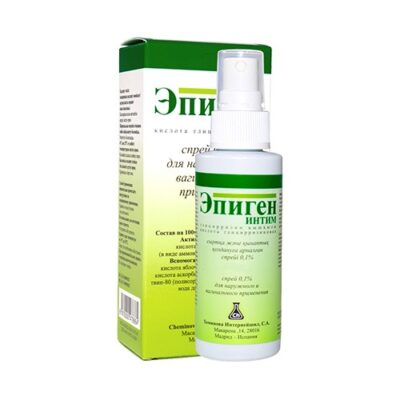






Reviews
There are no reviews yet.